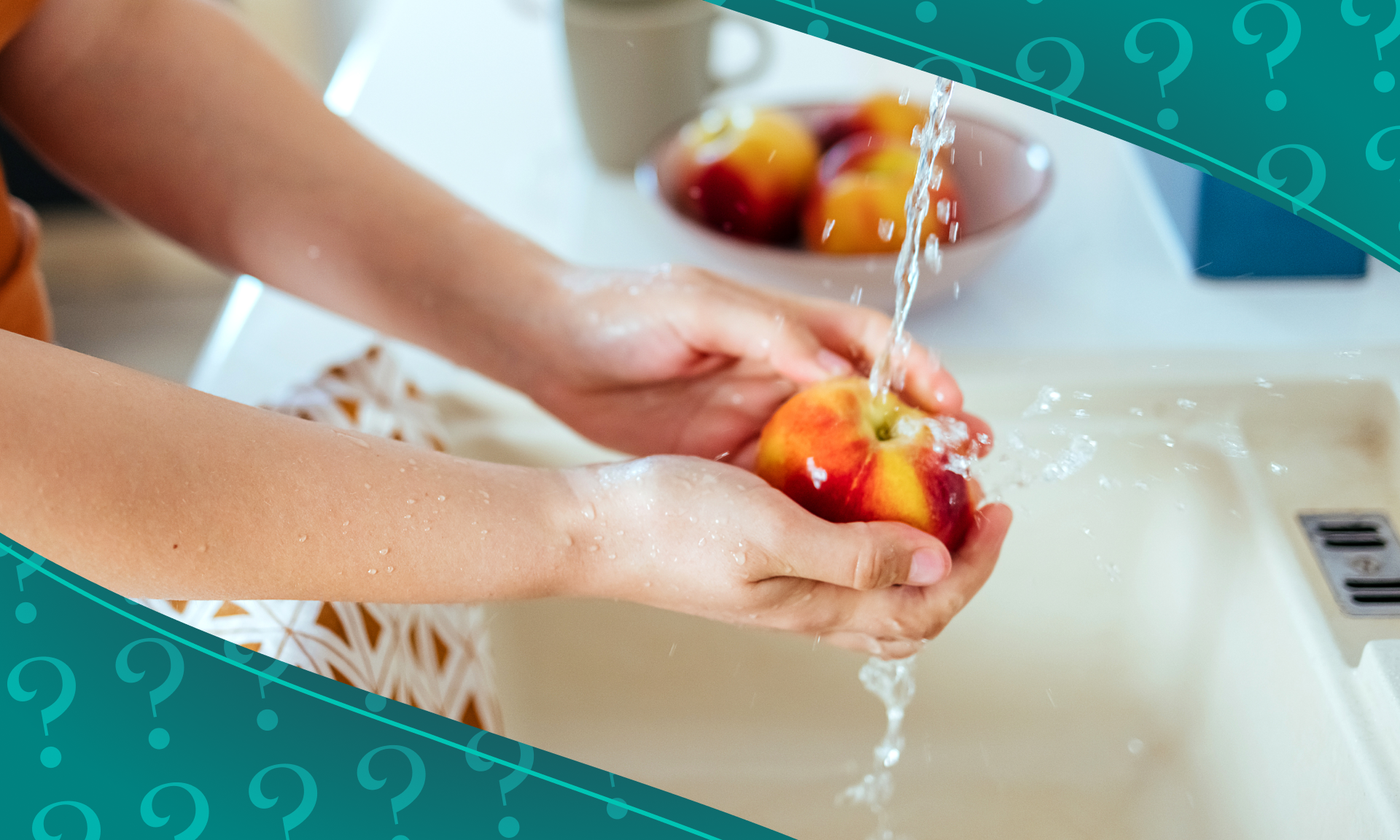Washing your produce before eating or cooking is almost as habitual as washing your hands. But should you soak your berries in water, or is a quick rinse enough? What about prewashed produce — do you need to clean that, too? Here, Bryan Quoc Le, PhD, a food scientist and author of “150 Food Science Questions Answered” shares the best way to clean your fruits and veggies to avoid germs that can make you sick.
How should you wash fruits and vegetables?
The safest way to wash most fruits and vegetables is simple: Before you eat or prepare your produce, “run [them] under cold water … [for] anywhere between 10 to 20 seconds,” says Le. Make sure any visible dirt or “streaks of material” from your produce is washed off, he says. Then, dry them with a clean cloth or paper towel to remove even more bacteria. If your produce says it’s been prewashed, good news: Your job is likely done.
There are a couple of “don’ts” when it comes to washing fruits and vegetables, says Le. First, don’t use produce washes, soap, or any other cleaning products. “You're contaminating [your produce] with soap or some kind of compound or chemical that … [may] get embedded in there,” he says. The FDA and the CDC don’t recommend using produce sprays for this same reason, with the former adding that “the safety of the residues of commercial produce washes is not known.”
The second mistake is letting your fruits or vegetables soak in water. Once they’re soaking, the water and produce become a breeding ground for more potentially harmful bacteria that you could ingest. Even if you rinse them off afterward, the new bacteria may not wash away (more on that below).
Featured Expert:

Bryan Quoc Le, PhD - Researcher, consultant, and author who specializes in food science
Is rinsing produce enough to prevent foodborne illnesses?
Your produce encounters plenty of opportunities to become contaminated — from getting harvested, to being stocked in the grocery store, to being touched by shoppers. Washing your fruits and vegetables can reduce your risk of getting some foodborne illness.
But not all bacteria can be rinsed off, even if you’re cleaning produce the right way, says Le. “[Some bacteria] really stick to the surface … They also form these biofilms, which are like really sticky residues,” says Le.
So, what’s a fruit-and-veggie-lover to do? Cooking your produce is the safest way to eat it, since the heat often kills harmful bacteria, according to the CDC. Choose produce with no visible cuts and bruises (which are like little doorways for bacteria) or be sure to cut those parts off to make them safer to eat raw. And make sure your own hands are clean when preparing and eating any food.
Don’t let the ick from dirty produce scare you away from your favorite, nutritious fruits and veggies. A thorough rinse in clean, cold water — and cooking your produce, if possible — is the best way to minimize your risk of foodborne illnesses. So rinse, eat, and repeat.
Ask an Expert is for informational purposes only, does not constitute medical advice, and is not a substitute for professional medical advice, diagnosis, or treatment. Always seek the advice of your physician, mental-health professional, or other qualified health provider with any questions you may have regarding a medical condition. By submitting a question, you are agreeing to let theSkimm use it—in part or in full—and we may edit its answer for length and/or clarity.
Live Smarter
Sign up for the Daily Skimm email newsletter. Delivered to your inbox every morning and prepares you for your day in minutes.






